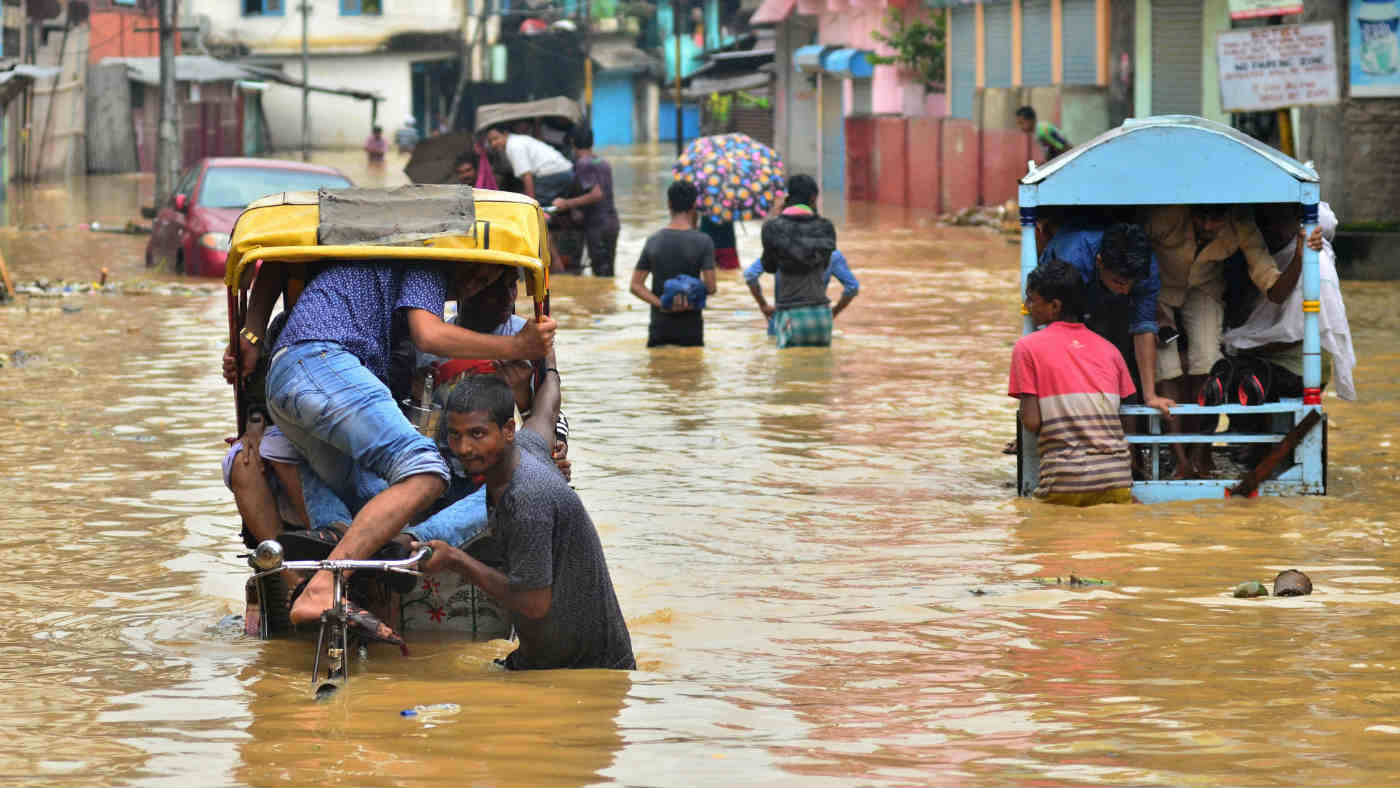Climate change raises Asia sea levels to dangerous limits
Tens of millions at risk of flooding on banks of Ganges and Yangtse

Climate change and increasing urbanisation could have a devastating effect on south-east Asia in the near future, with a study by the Asian Development Bank predicting that rising sea levels and severe flooding could claim the lives of as many as 137 million people.
Over the next 30 years, "it is projected that heavy rainfall events will be increasing... in Asia, by about 20 per cent for sure", Dewi Kirono, a climate scientist at Australia's Commonwealth Scientific and Industrial Research Organisation, told CNN. Southern Asia is already one of the wettest regions in the world, receiving an average of at least 40ins of rainfall a year.
This could have a devastating effect on the 500 million people who live on or around the region's three biggest river deltas, the Ganges, Brahmaputra and Yangtze, which are most at risk from rising sea levels and flash flooding.
The Week
Escape your echo chamber. Get the facts behind the news, plus analysis from multiple perspectives.

Sign up for The Week's Free Newsletters
From our morning news briefing to a weekly Good News Newsletter, get the best of The Week delivered directly to your inbox.
From our morning news briefing to a weekly Good News Newsletter, get the best of The Week delivered directly to your inbox.
Bangladesh, India, and southern China have accounted for the vast majority of flood-related deaths worldwide since 1950, according to Belgium's Universite Catholique de Louvain. This year alone, cyclone Mora displaced an estimated half a million people in the Kutupalang settlement in Bangladesh and more than 12 million have been forced to flee their homes in southern China.
According to the Xinhua state news agency, flooding in Jiangxi province has so far caused $430m (£328m) worth of damage, while 53,000 homes have been destroyed in neighbouring Hunan province in recent months.
"Mumbai, Shanghai, Hanoi, Beijing, Phnom Penh - every major city in Asia has had a major flooding event [in the last five years] so there's no doubt about it that the situation is getting worse," Kirono added.
As well as the immediate threat to life and property, rising seas levels will also have longer-term consequences. The Ganges, Brahmaputra and Yangtze collectively support about 14 per cent of the world's population and any land lost to flooding could lead to massive food shortages and famine.
A free daily email with the biggest news stories of the day – and the best features from TheWeek.com
The causes
Increased flash-flooding resulting from climate change is one risk factor, but rapid urbanisation is another. "Sprawling, rapid urban growth across South Asia, built to accommodate the millions of rural residents moving to cities" has contributed to the problem, says CNN.
The World Bank estimates that more than 56 per cent of China's population now lives in cities, many of them in super-cities around the mouth of the Yangtze. That's up from just 17 per cent in the 1970s. Urban residents also now account for a third of India's total population.
-
 What will the US economy look like in 2026?
What will the US economy look like in 2026?Today’s Big Question Wall Street is bullish, but uncertain
-
 Alaa Abd el-Fattah: should Egyptian dissident be stripped of UK citizenship?
Alaa Abd el-Fattah: should Egyptian dissident be stripped of UK citizenship?Today's Big Question Resurfaced social media posts appear to show the democracy activist calling for the killing of Zionists and police
-
 Biggest political break-ups and make-ups of 2025
Biggest political break-ups and make-ups of 2025The Explainer From Trump and Musk to the UK and the EU, Christmas wouldn’t be Christmas without a round-up of the year’s relationship drama
-
 How Bulgaria’s government fell amid mass protests
How Bulgaria’s government fell amid mass protestsThe Explainer The country’s prime minister resigned as part of the fallout
-
 Normalising relations with the Taliban in Afghanistan
Normalising relations with the Taliban in AfghanistanThe Explainer The regime is coming in from the diplomatic cold, as countries lose hope of armed opposition and seek cooperation on counterterrorism, counter-narcotics and deportation of immigrants
-
 Pakistan: Trump’s ‘favourite field marshal’ takes charge
Pakistan: Trump’s ‘favourite field marshal’ takes chargeIn the Spotlight Asim Munir’s control over all three branches of Pakistan’s military gives him ‘sweeping powers’ – and almost unlimited freedom to use them
-
 Femicide: Italy’s newest crime
Femicide: Italy’s newest crimeThe Explainer Landmark law to criminalise murder of a woman as an ‘act of hatred’ or ‘subjugation’ but critics say Italy is still deeply patriarchal
-
 Brazil’s Bolsonaro behind bars after appeals run out
Brazil’s Bolsonaro behind bars after appeals run outSpeed Read He will serve 27 years in prison
-
 Americans traveling abroad face renewed criticism in the Trump era
Americans traveling abroad face renewed criticism in the Trump eraThe Explainer Some of Trump’s behavior has Americans being questioned
-
 Nigeria confused by Trump invasion threat
Nigeria confused by Trump invasion threatSpeed Read Trump has claimed the country is persecuting Christians
-
 Sanae Takaichi: Japan’s Iron Lady set to be the country’s first woman prime minister
Sanae Takaichi: Japan’s Iron Lady set to be the country’s first woman prime ministerIn the Spotlight Takaichi is a member of Japan’s conservative, nationalist Liberal Democratic Party